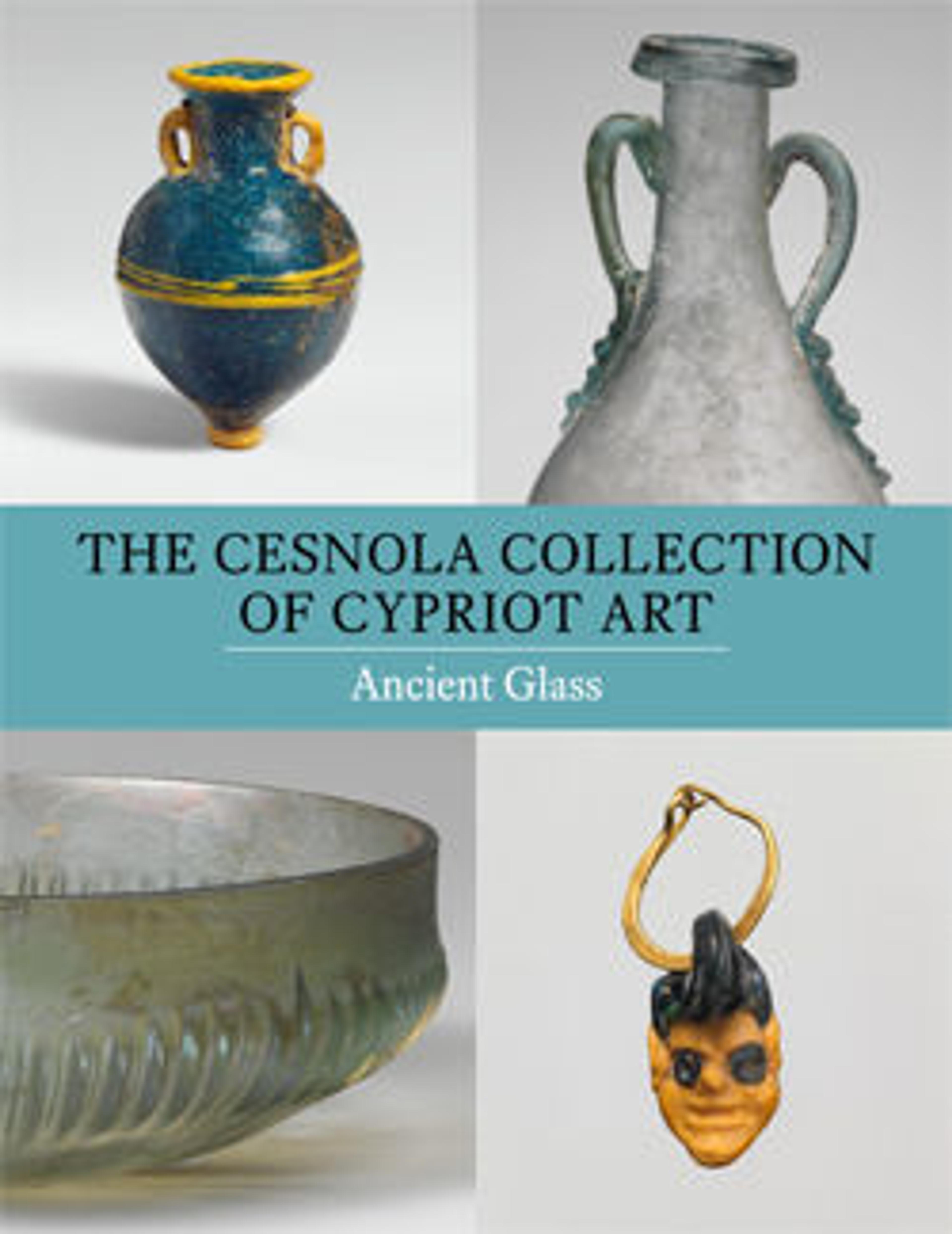Glass stirring rod
Stirring rod: translucent cobalt blue with opaque white trails.
Cylindrical rod, slightly bent at top end, tightly twisted to produce spiral fluting; bottom end tooled into a globular knob, the top end is formed into a tapering loop or ring handle by bending the rod round a full 360 degrees and attaching it to the top of the shaft of the rod, in profile aslant to rod.
Complete, but broken and repaired at top of rod where turned out to form handle; some dulling, iridescence, and patches of faint brownish weathering.
Disk: translucent light blue with opaque white trail.
Low, conical body with ridged surface, flattened at center; flat bottom but with shallow spiral grooves; vertical hole.
Trail applied to upper surface in a spiral from center to outer edge.
Intact; many bubbles; some dulling and pitting, and faint brownish enamel-like weathering.
Made by winding trail in a spiral around rod.
The disk is firmly stuck in one place, aslant to the rod.
This object was used to stir or mix an ointment or cosmetic stored in a long-necked bottle. The mixture could then be extracted in small amounts using the tip of the rod. The perforated disk that is attached to the rod resembles objects that are usually called spindle whorls. Here, however, it was clearly added to the rod during manufacture and served as a stopper.
Cylindrical rod, slightly bent at top end, tightly twisted to produce spiral fluting; bottom end tooled into a globular knob, the top end is formed into a tapering loop or ring handle by bending the rod round a full 360 degrees and attaching it to the top of the shaft of the rod, in profile aslant to rod.
Complete, but broken and repaired at top of rod where turned out to form handle; some dulling, iridescence, and patches of faint brownish weathering.
Disk: translucent light blue with opaque white trail.
Low, conical body with ridged surface, flattened at center; flat bottom but with shallow spiral grooves; vertical hole.
Trail applied to upper surface in a spiral from center to outer edge.
Intact; many bubbles; some dulling and pitting, and faint brownish enamel-like weathering.
Made by winding trail in a spiral around rod.
The disk is firmly stuck in one place, aslant to the rod.
This object was used to stir or mix an ointment or cosmetic stored in a long-necked bottle. The mixture could then be extracted in small amounts using the tip of the rod. The perforated disk that is attached to the rod resembles objects that are usually called spindle whorls. Here, however, it was clearly added to the rod during manufacture and served as a stopper.
Artwork Details
- Title: Glass stirring rod
- Period: Early Imperial
- Date: 1st century CE
- Culture: Roman
- Medium: Glass; drawn and tooled
- Dimensions: H. 6 7/8 in. (17.5 cm); diameter 1 1/8 in. (2.9 cm)
- Classification: Glass
- Credit Line: The Cesnola Collection, Purchased by subscription, 1874–76
- Object Number: 74.51.153
- Curatorial Department: Greek and Roman Art
More Artwork
Research Resources
The Met provides unparalleled resources for research and welcomes an international community of students and scholars. The Met's Open Access API is where creators and researchers can connect to the The Met collection. Open Access data and public domain images are available for unrestricted commercial and noncommercial use without permission or fee.
To request images under copyright and other restrictions, please use this Image Request form.
Feedback
We continue to research and examine historical and cultural context for objects in The Met collection. If you have comments or questions about this object record, please contact us using the form below. The Museum looks forward to receiving your comments.
